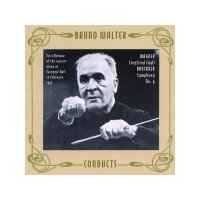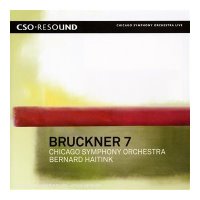Bay and ASO Bring Bruckner Back to Austin!
Classical Travels
This Week in Texas
Anton Bruckner’s music has always been pretty popular in Europe, but in North America not so much. Perhaps Bruckner’s time has come. Yannick Nézet-Séguin is performing and recording all the Bruckner symphonies with his Orchestre Métropolitain in Montreal and the Dallas Symphony’s conductor Jaap van Zweden is also recording the cycle, albeit with his Dutch orchestra.
Last night, at the Long Center, the city’s new concert hall, Peter Bay and the Austin Symphony Orchestra (ASO) gave the capitol of Texas its first Bruckner performance in thirteen years – the Fourth Symphony, a work last heard here thirty-five years ago.
Fortunately for all Bruckner aficionados present, Maestro Bay and his players gave a terrific performance of the Bruckner Fourth and listeners plainly liked what they heard! Perhaps the positive reception will encourage the Austin Symphony to program more Bruckner – and soon.
Stops, Starts and Wagnerian Climaxes Challenge Orchestra and Audience
The problem with Bruckner for many listeners has always been sheer length, and a tendency on the composer’s part to stop and start with alarming regularity. Just when he gets a good thing going, they complain, he brings everything to a halt and after an interval of silence or dithering, sets off again with something completely different.
On the plus side, most listeners acknowledge that Bruckner wrote some lovely melodies, and even better, that every one of his symphonies has at least half a dozen massive and brassy Wagnerian climaxes. The ultimate challenge for many audiences is whether they can stay engaged long enough to relish those big moments when they come.
In my opinion, Bruckner’s symphonies are unique and profoundly moving essentials in orchestral literature. For all their imperfections, they remain remarkable achievements of the composer’s art and whether or not one shares Bruckner’s deeply-felt Catholic faith -this was a man who kept a daily record of the number of his prayers – they are ultimately incomparable spiritual journeys.
As do most Bruckner symphonies, the Fourth starts with a tremolo in the strings which sets up a horn solo a few bars later. Peter Bay made sure that the tremolo was not only soft, but ppp as the composer intended. Principal horn Thomas (Tom) Hale nailed his solo with complete assurance, and the performance was off to a great start.
The second movement Andante was taken at the comfortable walking tempo it ought to have and the viola and cello sections played their extended melodies with the utmost sensitivity and expression. The brass fanfares in the scherzo were fearless and thrilling. In the finale the horn playing was magnificent. Peter Bay got the best out of his players and showed great insight into how a Bruckner symphony works. All in all a great night for Bruckner.
Which of Bruckner’s Many Revisions is a Maestro to Choose?
In any discussion of Bruckner, one is inevitably compelled to deal with the question of all the different versions of the scores. Bruckner was an obsessive revisionist. He often allowed his colleagues Josef Schalk and Ferdinand Löwe to make revisions too, with the result that scholars and conductors today must wade through as many as twenty-five different published and unpublished versions of the symphonies and then decide which ones are the most authentic.
In the case of the Fourth Symphony, there are five different versions.
The Fourth symphony provides a good example of what Bruckner’s well-meaning colleagues did on his behalf. In the recapitulation of the first movement, the horn plays its melody once again over tremolo strings, but this time there is a beautiful arabesque around the melody played by the flute. It is a magical moment in the symphony. In the Schalk-Löwe revision, that flute is doubled by muted first violins. This version is lovely too, but quite without the simplicity and intimacy of Bruckner’s original conception.
Bay and ASO Score with Bruckner Society Edition
David Mead’s notes in the ASO program book state that Maestro Peter Bay opted for the Bruckner Society’s edition, and that he is using editor Leopold “Nowak’s version of the (Bruckner) version of 1878-80″, but that is not quite accurate. Bruckner revised this 1878-80 version in 1886 for a performance conducted by Seidl in New York, and it is this later version that Nowak used for the Bruckner Society’s edition of the work.
This 1886 revision, with one notable exception, is not radically different from Bruckner’s first definitive version of 1880. Notwithstanding the many minor changes in orchestration in the later version, there is one alteration of major significance.
The horn melody which opens the first movement, returns in the final bars of the symphony played by trombone and tuba. Unfortunately, this melody in the final bars is not heard in some versions, because it is drowned out by the other brass instruments. In the 1886 version, Bruckner reinforced trombone and tuba with the third and fourth horns, to help the melody come through more clearly.
Obviously, this change is key to understanding the compositional unity of the symphony. The composer was evidently concerned that the melody be heard; consequently, the conductor must strive to realize his intent. Kudos to Maestro Bay for his choice of this edition, and for his execution of Bruckner’s intentions in this performance.
Readers interested in learning more about the problems of the various Bruckner editions are referred to the following: Hans-Hubert Schönzeler: “Bruckner.” New York: Vienna House, 1978; Deryck Cooke: ‘The Bruckner Problem Simplified’ in “Vindications.” Cambridge: Cambridge University Press, 1982.
Chee-Yun Opens Concert with Mendelssohn Violin Concerto
The concert began with a performance of the Mendelssohn Violin Concerto featuring Korean-born violinist Chee-Yun who is now Professor of Violin at Southern Methodist University (SMU) in Dallas.
Although Chee-Yun played the familiar Violin Concerto with technical ease and beautiful tone, it was a soft-edged performance, somewhat lacking in personality. The ASO’s accompaniment was, to my mind, excessively deferential.
It’s all very well and admirable to keep the orchestra soft enough to enable the soloist to be heard, but there are times when the interplay between soloist and orchestra requires the orchestra to be more assertive. The melody in the slow movement, for example, is lovely but what is needed here is a ‘chamber music’, rather than an ‘accompanied solo’ texture.
This year is the 200th anniversary of Mendelssohn’s birth and next month (Nov. 20/21) the ASO will continue their tribute to the composer with the incidental music for Shakespeare's A Midsummer Night’s Dream.
> Recommended Listen: Bruckner's Fourth Symphony, Klaus Tennstedt, London Phil (Naxos Music Library, available free to La SCENA Card members)
Paul E. Robinson is the author of Herbert von Karajan: the Maestro as Superstar, and Sir Georg Solti: His Life and Music, both available at Amazon.com.
Labels: Austin Symphony Orchestra, bruckner, classical music blog, Long Center, violinist Chee-Yun







